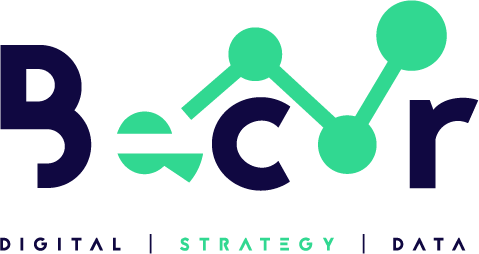It’s that time of the year again! Well it’s February but it is not too late to make new goals and resolutions for your social media. Setting Goals and Resolutions is something you can do to bring growth and success to your business. This is what serves as a road-map for your strategy, and at the same time, you will be able to evaluate your successes and missteps.
In this blog post, I have brought you a step-by-step guide to planning your social media goals, so that you can ensure your company’s social media success, now and in the future.
Use the S.M.A.R.T. Goal Framework.
You have to be SMART when setting these goals and that is why I recommend The S.M.A.R.T goal framework. You will be able to define your social media goals, strategies, objectives, and tactics individually. So what does SMART stands for?
- Specific: You have to be clear and more specific on your goals. For example, I want to Gain 1000 Followers.
- Measurable: Use numbers to Quantify your Goals. For example, I want to Gain 1000 Followers by April 5th.
- Attainable: Set Goals that are within your reach. If it is impossible to gain 1000 followers in 2 months, then be reasonable and set something that is within reach if you put in the required work.
- Relevant: The Goals you set should be related to what you want to achieve as a business. For example, gaining 1000 followers is not relevant if you want to generate more leads. Instead, work on creating more engagement.
- Timely: Your Goals should be time sensitive. If you do not hold your team accountable and have deadlines, how will you know if you have reached a certain milestone?
If you use this framework, I assure you that you will have directed, actionable, quantifiable goals.
Social Media Goals You Should set in 2020
Bonus Tip: Conduct a social media audit
Before you even begin to set any goals, you need to know where you are as a business. Start by analyzing your social media. How many accounts do you have? Which platforms are doing good? Where did you get the most traffic from? How was your engagement? How much budget did you have? Who is in your team? Google Analytics is a good place to start if you want to get a sense of your current level of performance.
Goal 1. To Build brand awareness.
If your goal is to create Brand awareness, this means that you should know how many people on social media know you exist and understand the kinds of products and services that you offer. How do you know this? The key metrics to know your brand awareness are:
- How many people are mentioning or tagging your business?
- How many shares do you get?
- How many people does your posts reach?
- How many impressions do you get?
- What is your virality rate?
Goal 2. To Manage brand reputation.
Your popularity and customer satisfaction is what Brand reputation is all about for Business to Consumer (B2C) Businesses. However for Business to Business Companies, it is all about Industry perception and Thought leadership.
For Brand reputation this is what you have to look out for:
- How is your customer satisfaction?
- What is your applause rate?
- What is your amplification rate?
- How is your social share of voice?
- What is your net promoter score?
Goal 3. To Build Engagement.
Building an engaged community means you have a ready audience that wants to hear about the latest developments at your company. That’s a huge asset when you launch a new product, and to ensure regular ongoing sales.
These are the Key metrics to look out for:
- How is your audience growth rate?
- How is your engagement rate?
- How is your click-through rate?
- What is your bounce rate?
- How is your conversation rate?
- What is your net promoter score?
- How is your comment conversation score?
Goal 4. To Increase conversions/sales.
A huge goal for Businesses is to convert the audience to customer sales. When your social media efforts bring in sales, it’s easy to show the value of your work.
However, a conversion does not have to be a purchase. A conversion might be signing up for a free newsletter or downloading a freebie. But every conversion has real, measurable value for the company, even if there is no cash exchanges hands.
Here is what you should look out for:
- How is your conversion rate?
- How is your click-through rate?
- What is your bounce rate?
- How is your social media conversion rate?
Goal 5. To Gain customer/market insights.
Customer insights are important because you can understand your Audience better and therefore cater for their needs better. You can use internal milestones, like building out (or updating) your Buyer persona.
Goal 6. To Generating leads.
Social media is a good way to bring in leads to fill your sales funnel and produce value for your Brand. Your Conversion rate will help you measure your lead generation. Use it to track how many people are signing up for your lead-generation offers like freebies and contests. You could also use internal measures to track how many leads your sales team is bringing in, and how well they convert those leads to customers.
In case You Missed it: How to Make a Call to Action that Yields Conversions-With Examples!
Goal 7. To Deliver customer service/support.
People go to social media to check reviews and testimonials before buying a product or service. Customer service and Support is therefore a very important Goal for your social media. Customer satisfaction score is an important metric to track for customer service-related social media goals. You’ll likely also want to track internal metrics like number of service requests tackled per customer service rep.
Goal 8. To Attract candidates (recruitment).
For companies that are recruiting especially through LinkedIn, bringing in successful candidates is another form of conversion. Your conversion metrics are important when tracking recruitment social media goals. But rather than sheer numbers, you’ll also want to ensure you’re bringing in quality candidates who are appropriate for the types of roles you need to fill. Work with your HR team to develop a clear picture of their needs and establish criteria for evaluating social media goals related to recruitment.
Goal 9. To Identify crises and manage communications.
How you respond to a Crisis can make or break you as a business. This is closely tied to your Brand Reputation. You should create concrete internal steps to help in case of a crisis. For instance, developing a social media policy, securing your social accounts, and nailing down your crisis communications plan.
Goal 10. To Improve internal communications.
Social media is a platform for building and communicating with your internal teams. Solid internal communications are also the basis of an effective employee advocacy program.
You can use the same kinds of metric you use for external communications here:
- How is your engagement rate?
- What is your amplification rate?
- What is your click-through rate?
- What is your bounce rate?
Which ones of these goals are you aiming to achieve first?
Social Media is getting even bigger in 2020 and although trends get modified quickly, these ten simple social media goals will help you prepare and achieve great things for your business in 2020.
Which one are you aiming to achieve first? What other social media goals do you have to ensure your brand’s growth and success in the coming year? Let us know in the comments below.
And if you’re ready to take your social media to a whole new level and want a powerful tool to help you manage it all, Contact us today.
RELATED CONTENT:
12 Steps to Create a Content Marketing Strategy for your Business.
Reasons why your Website does not Rank on Google.
Top SEO Tasks You need to Focus On in 2020 and Why it Matters to Your Strategy.


